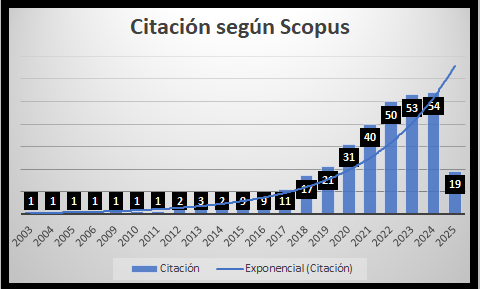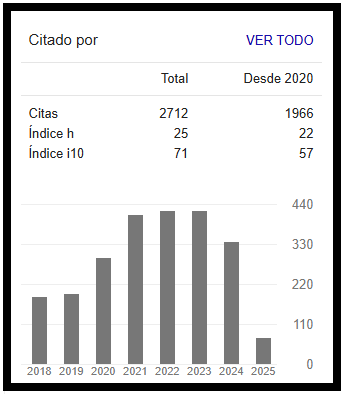Creation of the Seoul Brand through Hallyu
DOI:
https://doi.org/10.24265/cian.2020.n12.07Keywords:
Hallyu, K-Pop, Seoul Metropolitan Government, City Brand, I.Seoul.U, VisitSeoul.netAbstract
This article focuses on the VisitSeoul.netactivities, as part of I.Seoul.U brand, to observe South Korea capital´s brand and understand how the Seoul Metropolitan Government has developed and develops different strategies and activities through its identity and image. From a documentary review and an in-depth interview with Lee Doo Ran (Seoul City Council), as well as an exploration that allows us to understand these activities, the importance of Hallyu (The Korean Wave) for the South Korean capital is investigated for understanding how the Seoul Metropolitan Government, using Hallyu, develops strategies and activities focused on maturing and respecting its city brand.
Metrics
Downloads
References
Capriotti, P. (2013). Planificación Estratégica de la Imagen Corporativa. Málaga. España: IIRP-Instituto de Investigación en Relaciones Públicas.
Dubravčíková, K. (18 de julio de 2018). K-POP as a global phenomenon. Why China fails to achieve similar success?. CEIAS (Central European Institute of Asian Studies). https://ceias.eu/k-pop-as-a-global-phenomenon/
Echeverri, L. (30 de julio de 2013). Marketing Territorial Y Su Relación Con Marca País. País Marca OBS. https://paismarca.com/2013/07/30/marketing-territorial/
ET Bureau (30 de julio de 2019). BTS tops Billboard 100 list: How K-pop helped Korea improve its economy. The Economic Times. https://economictimes.indiatimes.com/magazines/panache/bts-tops-billboard-100-list-how-k-pop-helped-korea-improve-its-economy/articleshow/65266543.cms?from=mdr
Flew, T. (2016). Entertaiment media, cultural power, and post-globalization: The case of China´s international media expansión and the discousure of Soft Power. Global Media and China.
Hyundai Research Institute (2018). “Economic Effects of BTS”. http://www.hri.co.kr/board/reportView.asp
Jin, Y. (2012). Hallyu 2.0: The Korean Wave in the Age of Social Media. Trabajo presentado en Nam Center for Korean Studies en International Institute (U-M)
Kelley , C. (11 de enero de 2019). BTS Lead The Growth Of Hallyu To Nearly 90 Million Fans Worldwide. Forbes. https://www.forbes.com/sites/caitlinkelley/2019/01/11/bts-lead-growth-of-hallyu-90-millionfans-2018/#7974ac1c70bc
KOCIS. (2011). “The Korean Wave: A New Pop Culture Phenomenon”. Korean Culture and Information Service Ministry of Culture, Sports and Tourism. Republic of Korea.
Kotler, P., Bowen, J., Makens, J., y Moreno, R. (2003). Marketing para turismo. McGraw-Hill.
López, R., y Benlloch, M. (2005). De la marca comercial a la marca territorio. Recerca: revista de pensament i anàlisi. Volumen (5), pp. 87-100
Lucero, D. (2016). El turismo creativo. Una nueva estrategia de desarrollo local en el municipio de Godoy Cruz, provincia de Mendoza (Maestría). Universidad Nacional de Quilmes, Argentina
Moon-Hee, C. (2018). Economic Effects of BTS. K-pop Group BTS Induces Production Worth 4 Tril. Won per Year. Business Korea. http://www.businesskorea.co.kr/news/articleView.html?idxno=27583
Muñiz, N., y Cervantes, M. (2010). Marketing de ciudades y “Place Branding”. Pecvnia, Monográfico, pp. 123-149.
Seoul Metropolitan Government (2017a). Official Tourist Guide 2017-2018. Seúl, República de Corea.
Seoul Metropolitan Government (2017b). Oreaegage Guide 2017-2018. Seúl, República de Corea.
Seoul Metropolitan Government. (2019a). Family Site. http://english.seoul.go.kr/family-site/
Seoul Metropolitan Government. (2019b). I.Seoul.U. http://english.seoul.go.kr/policy-information/culture-tourism/iseoulu/seoul/
Soft Power 30 (2018). The Soft Power 30: A Global Ranking of Soft Power 2018. USC Center on Public Diplomacy. https://softpower30.com/country/south-korea/
Valls, J. (2013). Planificación estratégica de destinos turísticos. Aspectos diferenciales por tipologías. Gestión estratégica sostenible de destinos turísticos. Universidad Internacional de Andalucía, España.
VisitSeoul.net (2018). Oraegage Part 1 – Seochon’s Eateries. VISIT SEOUL.NET. http://english.visitseoul.net/tours/Oraegage-Part-1-–-Seochon’s-Eateries_/24978?letterSn=731ltcontent=180411_Oraegage+Part+-1+–+Seochon’s+Eateries
Woodier, J., y Park, S (2017). Republic of Korea: K-culture and the Next Wave of Economic Growth. International Journal of Cultural and Creative Industries. Volume 5, Issue 1
Downloads
Published
Issue
Section
License
In case the manuscript is approved, the authors retain the copyright and assign to the journal the right to publish, edit, reproduce, distribute, display and communicate in the country of origin and abroad by means of print and electronic media in different databases.
In order for this procedure to be recorded, the author must fill out the following formats:
Format 1 - Author data Format.
Format 2 - Affidavit on originality and authorization for the publication of articles Format.
Format 3 - Open Science Compliance.








2.png)


















